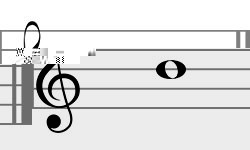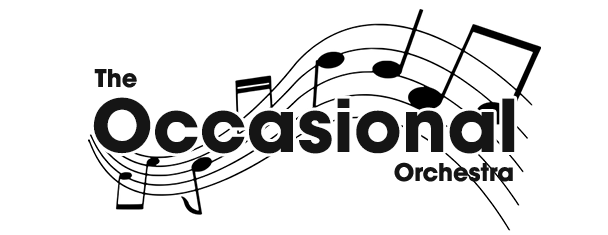For you to know what a bass clef is you must know first “what is a clef?”
Whatever reason you’re here, you’ve probably seen the 5 lines on which musical notes sit, this is called the “the stave”. until the clef is placed at the very beginning of the stave we do not know what to call the notes placed on the stave.
For example, this note is C if I used this clef (called alto)

However, it is called a B note if I used this clef (called treble)

Therefore, the use of a clef is absolutely essential, so make sure you always add one at the start of a stave and each subsequent line.
According to britannica the word “clef” is originated from a French word “key”, and it’s really aptly named, because in musical notation, a symbol is placed at the beginning of the staff, determining the pitch of a particular line and thus setting a reference for, or giving a “key” to, all notes of the staff.
In short, a clef is a musical symbol used to indicate which notes are represented by the lines and spaces on a musical stave.
Clefs in modern music notations are 3, the G-clef, F-clef, and C-clef, All of these clef symbols intentionally resemble the cursive forms of their respective letters. They have letter names because they assign the note with that name to a particular line on the staff. and they’re used as a reference note to the line, F-clef fixes the F below middle C, a C-clef fixes middle C, and a G-clef fixes the G above middle C.
Having those different clefs allows us to write music for different instruments and also voices, regardless of differences in range, and that allows us to write each part without hassle on a stave with a minimum of ledger lines (When we run out of room on the staff we add ledger (or leger) lines (these very short lines extend the 5 line, 4 space staff, allowing us to add extra notes). In conclusion
the G-clef (treble) is used for high parts, the C-clef for middle parts, and the F-clef (bass) for low parts.

- What is a bass clef?
The bass clef (also known as the “F clef”) is the first large symbol on the bottom staff, or bass staff, in piano music (Piano bass clef notes are most frequently played with the left hand). And it’s a musical clef that is used by many of low pitched musical instruments (like violin, cello and double bass for example).

- Why is it called an “F clef”?
It’s known as the F clef as it loops and wraps itself around the highest F note (F3–the F below middle C) on the bass staff. It also has two small dots either side of the 2nd line of the stave to show us which note is F. “F clef” is frequently used to mean the bass clef. However, the F clef has historically been used on other lines of the musical staff, most notably on the middle line, when it is known as the baritone clef (one can also use as baritone clef the entirely equivalent 5th line C clef). This usage is nowadays very rare, however.
- The history of the bass clef.
Bass-clef, or F-clef symbol originated by using the letter F and it has evolved from originally being written as a letter F through lots of different variations to what we know it as today.
- Why do we need the bass clef?
Bass clef is an extremely useful tool for few reasons.
- If we only used treble clef, we would have a more limited range of notes to read on one, five line staff. We would need to use an excessive amount of ledger lines and octave higher or lower markings.
- We can easily read pitches below middle C as I clarified above.
- By using both treble clef and bass clef, we can easily distinguish which parts of the music should be performed with the left hand and which parts should be played with the right hand.
- Therefore, you can learn to read piano sheet music faster.
- The best way to learn the bass clef.
learning to read the bass clef notes on piano takes a bit of practice. However, there are a few helpful tips that will help to significantly increase your learning speed and ensure that the information sticks with you better on the long run.
The best way to learn bass clef piano notes is by practicing slowly and consistently, always keep that in mind.
Learning to read bass clef piano notes is an extremely important skill, the bass clef system is made of 5 horizontal lines. Just like notes played by the right hand, bass clef notes can either sit on the line (known as a line note), or in the spaces between two lines (known as a space note).
For the notes on the lines you can use the phrase:
Great Britain Doesn’t Fight America
Or
Green Buses Drive Fast Always
There are a few other mnemonics you could use:
Good Boys Deserve Fudge Always – or: Great Big Dogs Frighten Auntie
And lastly, for the notes in the spaces it’s popular to use the phrase:
All Cows Eat Grass or Angry Crocodile Eats George
It doesn’t matter what phrase you use, as long as you remember the order of the notes: G, B, D, F, A.
It can seem overwhelming and complicated at first that you have to memorize them all but with a little practice, consistency and using the mnemonics covered above as well as flashcards you’ll slowly start to internalize them.

Conclusion
The bass clef is the key for reading music and it’s not less important than the treble clef.
The bass clef is used for low-pitched instruments.
Piano players follow both treble and bass clefs when playing. The notes on the bass clef set the rhythm for the piece they’re playing, while the notes on the treble clef create the melody that provokes all music listeners.
 The Occasional Orchestra Learn About Everything Music!
The Occasional Orchestra Learn About Everything Music!



